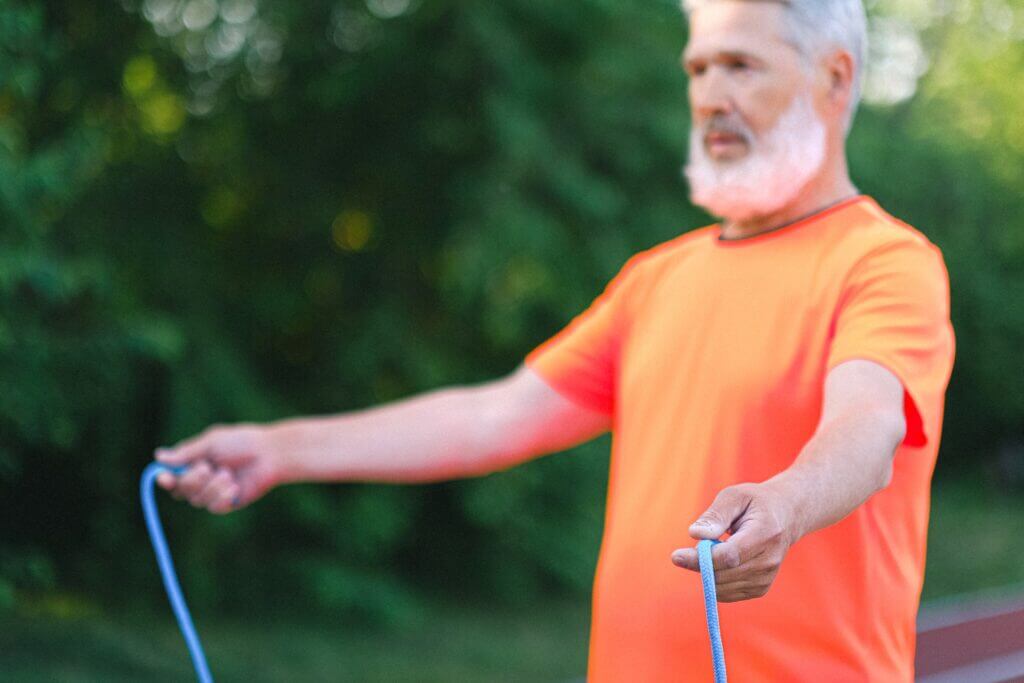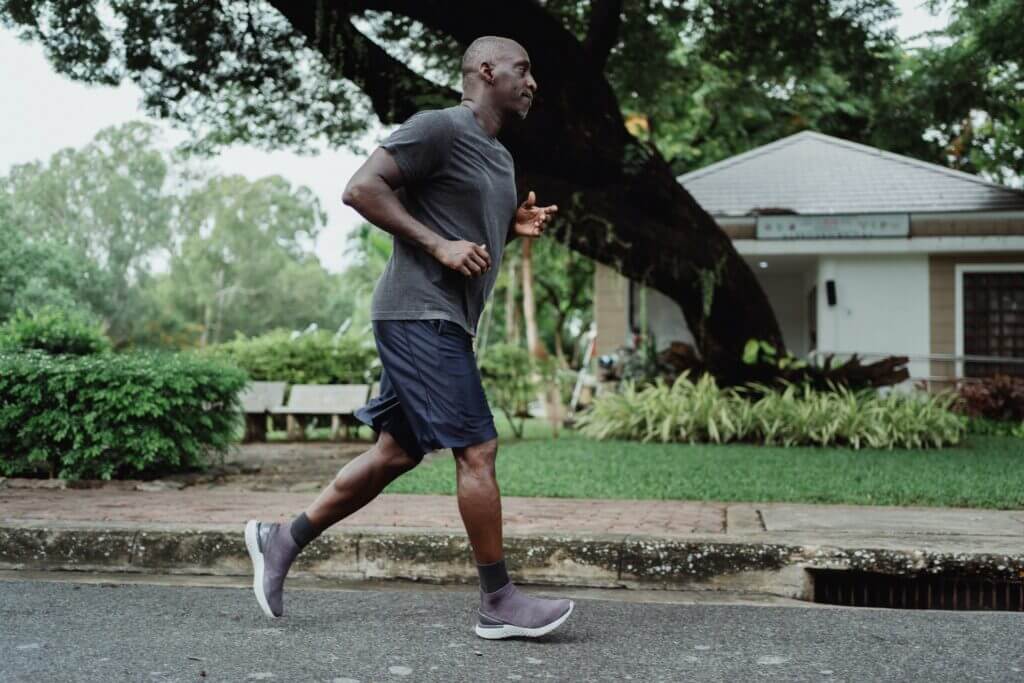Running cadence, or the number of steps you take per minute while running, can have a big impact on your performance. A higher cadence has been shown to improve running efficiency and reduce the risk of injury, making it an important factor to consider when trying to take your running to the next level.
In this blog post, we’ll explore five ways to increase your running cadence and improve your performance. Whether you’re a seasoned runner or just starting out, these tips can help you become a more efficient and injury-free runner. So, let’s dive in and discover how to increase your running cadence!
Table of Contents
How to measure your running cadence?
Your running cadence is the number of steps you take per minute (SPM) while running. Measuring your current cadence is an important first step in improving it. Here are two methods to measure your cadence:
Counting your steps manually
One way to measure your cadence is to count the number of steps you take per minute. To do this, count the number of times your right foot hits the ground in 30 seconds, and then multiply that number by two to get your steps per minute (SPM). It’s best to measure your cadence during a typical training run, so you get an accurate reflection of your running style.
Use a running watch or app
Another way to measure your cadence is to use a running watch or app that can track it for you. Many GPS watches and running apps now have cadence-tracking features built in. To use this feature, make sure your watch or app is set to display your cadence on the screen during your run. After your run, you can review your data to see your average cadence for the entire run, as well as how your cadence changed over time.
Whichever method you use, it’s important to measure your cadence regularly to track your progress and make sure you’re improving. Some runners find it helpful to track their cadence over time and make adjustments based on their results.
In addition to manually counting your steps or using a watch or app, you can also use a metronome or music with a specific beat to help with measuring your SPM. A metronome is a device that produces a regular, steady pulse, which can help you maintain a consistent cadence.
There are also apps available that play music with a specific beat to match your desired cadence. These tools can be especially useful during training runs to help you stay on track with your cadence goals.
What is the ideal average cadence for running?

This is a common question among runners, and the answer may vary depending on factors such as individual differences in stride length and running goals. However, research has shown that a cadence of around 180 steps per minute (SPM) is often considered ideal for most runners.
This 180 SPM cadence was first popularized by running coach Jack Daniels in the 1980s. Daniels observed that elite distance runners tended to have a cadence of around 180 SPM, and suggested that this may be due to the efficiency of shorter, quicker strides. Since then, many coaches and experts have recommended aiming for a cadence of 180 SPM or higher.
However, it’s important to note that this is not a one-size-fits-all approach. Some runners may naturally have a lower or higher cadence, and forcing a certain cadence can lead to injury or decreased efficiency. Additionally, different types of running, such as sprinting or trail running, may have different optimal cadences.
So while aiming for a cadence of 180 SPM can be a helpful guideline, it’s also important to listen to your own body and adjust as needed. One way to determine your ideal cadence is to measure your current cadence and gradually increase it by 5-10% until you find a comfortable, efficient cadence that works for you.
Why is my cadence so low?
If you’ve measured your cadence and found it to be lower than the recommended 180 steps per minute (SPM), you may be wondering why that is. There are several factors that can contribute to a low cadence, including:
Stride length
If your stride is too long, it can be difficult to take more steps per minute without feeling like you’re running in place. To increase your cadence, focus on shortening your stride and taking more steps per minute.
Poor form
Running with poor form can make it more difficult to increase your cadence. For example, if you land heavily on your heels, you may find it hard to take quick, light steps. To improve your form, try to land lightly on the balls of your feet and keep your strides short and quick.
Lack of fitness

If you’re new to running or haven’t been running regularly, it’s possible that your fitness level is not yet at a point where you can sustain a higher cadence. In this case, focus on building your endurance through consistent training and gradually increasing your cadence over time.
Muscular imbalances
Muscular imbalances or weaknesses can also make it difficult to increase your cadence. For example, if your glutes are weak, you may struggle to maintain a fast cadence. To address muscular imbalances, consider adding strength training exercises to your routine.
Footwear
The type of shoes you wear can also affect your cadence. Shoes with a lot of cushioning or a high heel-to-toe drop can make it more difficult to take quick, light steps. Consider trying lighter shoes or minimalist shoes to encourage a quicker cadence.
Ultimately, there are many factors that can contribute to a low cadence, and it may take some trial and error to determine what works best for you. However, by focusing on form, gradually increasing your cadence, and addressing any muscular imbalances, you can work towards improving your running efficiency and performance.
How long does it take to increase your running cadence?
While there is no one-size-fits-all answer, there are a few factors that can influence how long it takes to increase your cadence.
First and foremost, it’s important to remember that increasing your cadence should be a gradual process. Going from a low cadence to a high cadence too quickly can put you at risk for injury, so it’s important to take your time and be patient.
In general, most experts recommend aiming to increase your cadence by 5-10% at a time. For example, if your current cadence is 160 steps per minute (SPM), you might aim to increase it to 168 SPM over the course of a few weeks.
The time it takes to make this type of improvement will vary depending on a number of factors, including your starting cadence, how much time you’re willing to devote to training, and how quickly your body adapts to the changes.
If you’re starting with a low cadence and are willing to put in the time and effort to train consistently, you may be able to see improvement within a few weeks or months. However, if you’re starting with a higher cadence or have limited time to devote to training, it may take longer to see significant improvements.
It’s also worth noting that increasing your cadence is just one piece of the puzzle when it comes to improving your running performance. It’s important to combine cadence training with other types of training, such as interval training and strength training, in order to see the best results.
In general, it’s a good idea to work with a coach or a knowledgeable runner who can help you set realistic goals and design a training plan that works for you. With patience, consistency, and the right training plan, you can increase your running cadence and improve your performance over time.
5 Ways to Increase Your Running Cadence
Increasing your running cadence can take some effort, but there are a few strategies you can use to make it happen. Here are five effective ways to increase your cadence and improve your running performance:
1. Incorporate interval training
Interval training can be an effective way to increase your running cadence. This type of training involves alternating periods of high-intensity effort with periods of recovery, which can help improve your overall fitness and encourage a quicker cadence.
To incorporate interval training into your running routine, try a workout like this:
- Warm up for 10 minutes at an easy pace.
- Run at a hard effort for 30 seconds, aiming for a cadence of 180 SPM or higher.
- Recover for 30 seconds at an easy pace.
- Repeat the hard effort and recovery intervals for a total of 10-15 minutes.
- Cool down for 10 minutes at an easy pace.
Interval training can be done on a track, treadmill, or even on a flat section of road or trail. The key is to alternate between high-intensity efforts and recovery periods, with the goal of increasing your overall fitness and encouraging a quicker cadence.
When doing interval training to increase your cadence, pay attention to your stride length and foot strikes. Try to take shorter, quicker strides with a midfoot or forefoot strike, rather than longer, bounding strides with a heel strike. This can help encourage a quicker cadence and improve your overall running form.
Interval training can be challenging, so be sure to give your body time to recover between workouts. It’s also a good idea to start with shorter intervals and gradually work your way up to longer, more intense workouts as you build your fitness and stamina.
Overall, incorporating interval training into your running routine can be an effective way to increase your cadence and improve your overall performance. By challenging yourself with high-intensity efforts and focusing on good form, you can build the strength and endurance needed to run faster and more efficiently.
2. Use a metronome
A metronome is a device that produces a rhythmic ticking sound, which can help you stay on track with your running cadence. You can use a metronome app on your phone, or purchase a dedicated metronome device.
To use a metronome to increase your cadence, set it to the desired tempo (usually 180 beats per minute or higher) and try to match your foot strikes to the beat. You may need to start with a slower tempo and work your way up over time.
3. Focus on your form
Running with good form can help you run more efficiently, reducing the energy required to maintain a certain pace. It can also help you increase your cadence, allowing you to take shorter, quicker steps.
Here are a few tips to help you focus on your form and increase your cadence:
- Land lightly on your feet: Try to land on your midfoot or forefoot, rather than your heel. This can help reduce impact forces and promote a more natural foot strike.
- Keep your stride short and quick: Rather than taking long, bounding strides, aim to take shorter, quicker steps. This can help you maintain a quicker cadence and reduce the amount of time your feet spend on the ground.
- Keep your upper body relaxed: Try to keep your shoulders and arms relaxed, with your arms swinging naturally at your sides. Avoid tensing up or hunching over, as this can restrict your breathing and limit your range of motion.
- Lean forward slightly from your ankles: Rather than bending forward from your waist, try to lean forward slightly from your ankles. This can help you maintain momentum and promote a more efficient stride.
- Practice drills to improve your form: There are a number of drills you can do to improve your running form and increase your cadence. For example, try running with high knees or skipping, or practice short, quick strides with a fast turnover.
By focusing on your form and practicing these tips regularly, you can improve your running efficiency and increase your cadence over time. Just remember to start gradually and listen to your body, as making sudden changes to your form can increase your risk of injury.
4. Gradually increase SPM

While it may be tempting to try to increase your cadence all at once, doing so can be difficult and may increase your risk of injury. Instead, it’s best to increase your cadence gradually over time.
To do this, start by running at your current cadence and counting your steps per minute (SPM). Then, aim to increase your SPM by just a few steps per minute, such as 5-10, for a few weeks. Once you’ve become comfortable running at this new cadence, you can increase it again by another few steps per minute.
It’s important to listen to your body and avoid pushing yourself too hard too quickly. Gradually increasing your SPM can help you build the muscle memory and strength you need to run at a faster cadence safely and comfortably.
When increasing your cadence, be sure to pay attention to your form as well. Maintaining proper form can help you avoid injury and run more efficiently. Focus on keeping your stride short and quick, and avoid overstriding or taking long, bounding steps.
Remember, increasing your cadence isn’t a race, and it’s important to be patient with yourself. It may take several weeks or even months to reach your target cadence, but with consistent effort and patience, you’ll get there.
5. Consider your footwear
Your choice of footwear can also play a role in your running cadence. Generally, lighter shoes or minimalist shoes can help encourage a quicker cadence, as they allow for more natural foot movement and require less energy to lift your feet.
If you’re currently wearing heavier, more cushioned shoes, switching to lighter shoes or minimalist shoes may take some adjustment. Here are a few tips for making the transition:
- Start with short runs
Begin by wearing your new shoes for short runs of just a mile or two, gradually increasing the distance as your body adjusts.
- Focus on form
As you transition to lighter shoes, pay extra attention to your form to ensure you’re not overcompensating for the reduced cushioning.
- Gradually increase cadence
As you get used to the new shoes, try gradually increasing your cadence by a few steps per minute, as described in the previous section.
- Listen to your body
If you experience any pain or discomfort while transitioning to lighter shoes, back off and give your body time to adjust.
Remember, the type of shoe that works best for you will depend on your individual needs and preferences. It’s worth experimenting with different types of shoes to find what works best for you and your running cadence.
Does increasing cadence make you more tired?

When it comes to increasing your running cadence, you may be wondering if it will make you more tired. After all, running with a quicker cadence means taking more steps per minute, which could potentially lead to increased fatigue.
While it’s true that increasing your cadence can initially feel more tiring, the benefits of doing so far outweigh any temporary discomfort. By taking more steps per minute, you’re actually reducing the amount of time your feet spend on the ground with each stride. This means that your body has to produce less force to propel itself forward, resulting in improved running efficiency.
Additionally, running with a higher cadence can help reduce the risk of injury. When you take shorter, quicker steps, you naturally land with less impact, which can help reduce the strain on your joints and muscles. This can lead to less fatigue over time, as your body becomes more accustomed to the increased cadence.
That being said, it’s important to note that increasing your cadence too quickly or drastically can lead to fatigue and injury. It’s important to gradually increase your cadence over time, allowing your body to adapt to the change. Aim to increase your cadence by no more than 5% at a time, and give your body time to adjust before increasing it further.
Conclusion
In conclusion, there are several effective ways to increase your running cadence and improve your performance. By incorporating interval training, using a metronome, focusing on your form, gradually increasing SPM, and considering your footwear, you can make strides towards a quicker, more efficient stride.
It’s important to remember that everyone is different, and what works for one person may not work for another. Experiment with different methods and find what feels most comfortable and effective for you. It’s also crucial to be patient and gradual with any changes to your cadence, as sudden increases can lead to injury.
By increasing your cadence, you can improve your running efficiency and reduce the risk of injury. Additionally, running with a higher cadence can help you run faster and more efficiently, which is beneficial for both recreational and competitive runners.
So, take the time to measure your current cadence, try out different methods to increase it, and be patient with the process. By incorporating these five ways to increase your running cadence, you can take your running performance to the next level.


